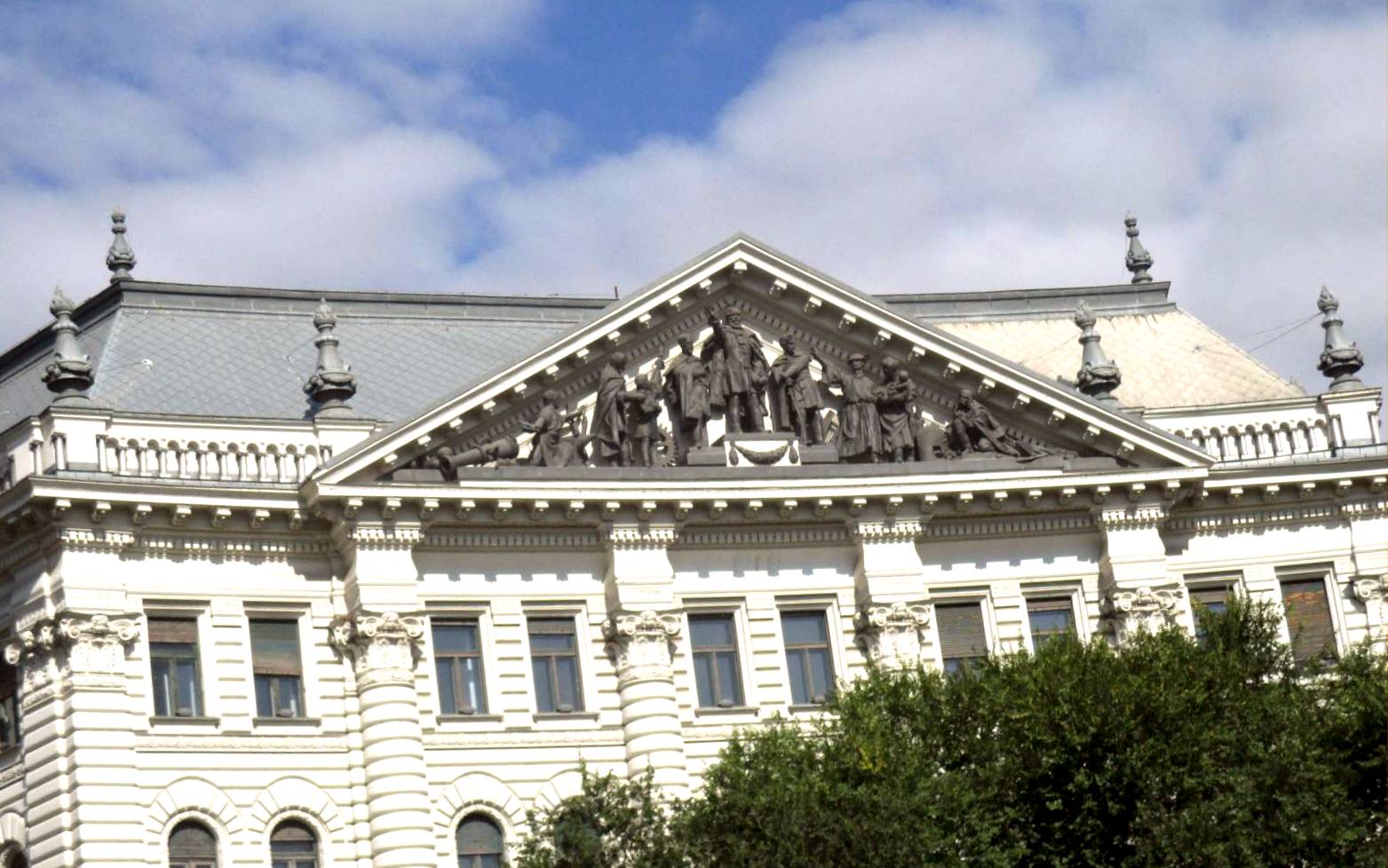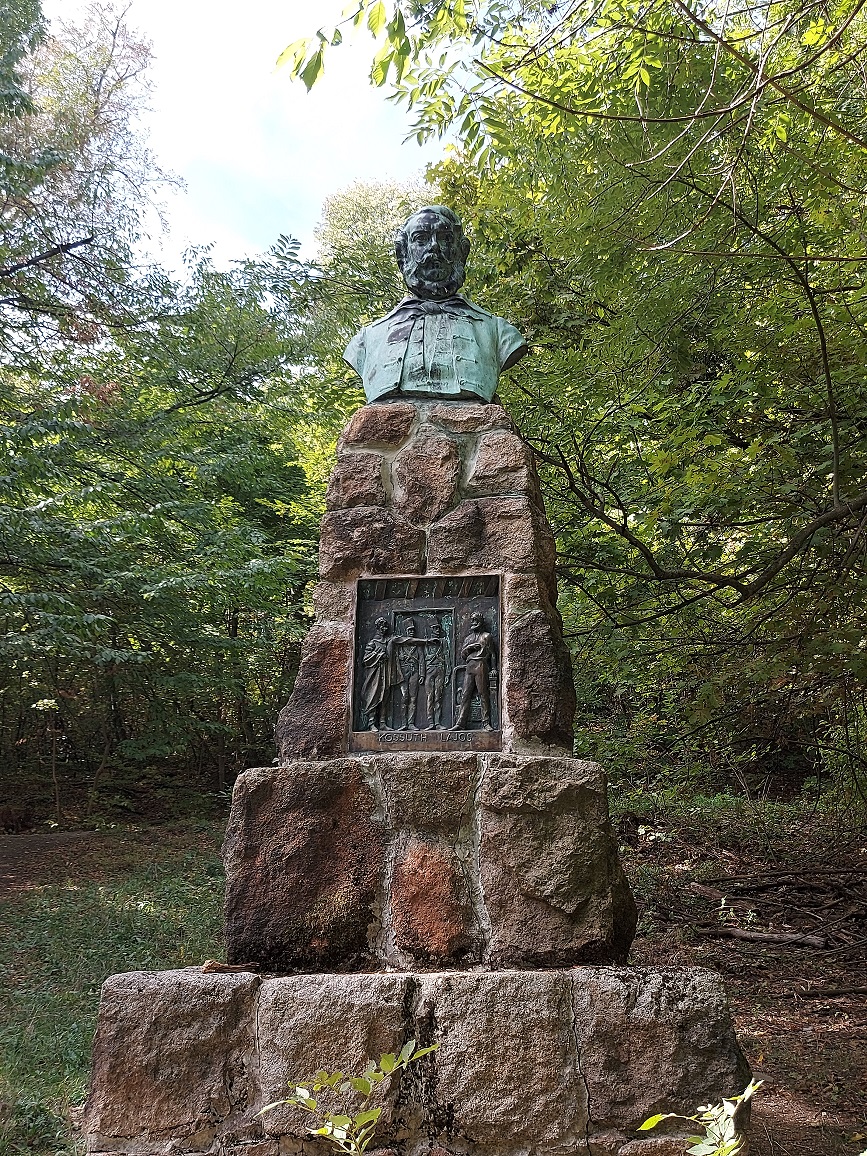The intellectual leader of Hungarian liberty, Lajos Kossuth, born in 1802, is still one of the best-known and greatest figures in Hungarian history. Despite all this, nearly twenty years had to pass after his death before a statue was finally erected for him in the capital. How could this be and what was the reason for it? That is what Pestbuda was after.
Lajos Kossuth died in March 1894 in Italy. After the news of his death reached Budapest, the capital immediately started feverishly organising to build a worthy memorial to him. Ten days after his death, the former Hatvani Street in the city centre already bore Kossuth's name. However, Franz Joseph not only did not allow the ordering of national mourning but also forbade state officials and army officers to participate in Kossuth's funeral ceremony, as he was against the Compromise all along.
After that, it is understandable that although the leadership of Budapest immediately raised the possibility of erecting a statue, the Habsburg leadership exerting pressure on the capital set them back at every opportunity. The case did not progress within official frameworks.

The funeral procession of Lajos Kossuth on Erzsébet Boulevard at Dohány Street (Photo: Fortepan/Reference No.: 82046)
The Zugliget Association, seeing the helplessness of the capital, started a separate collection, and since Kossuth was captured in the Hegyvidék in May 1837 - while he was resting in the Istenszeme inn - they saw this as sufficient reason to erect a statue of him at this location in 1912, and with this, they preceded all other initiatives in Budapest.

The Kossuth Statue near the Istenszeme inn in Zugliget (Photo: Hegyvidéki Local History Collection)
Budapest's first Kossuth Statue
The plan for a large statue of Kossuth came up already in the spring of 1894, for which a collection was initiated, but the donation did not bring results for a long time, as they had to wait until 1903 for the first sculpture tender to be announced. However, none of the tenders was accepted due to the poor turnout, so in 1906 another tender was announced, which was finally won by János Horvay.
The clay models, however, were not completed until 1911, and by the time the moulding of the side figures began, World War I broke out. The large capital monument was therefore only handed over on 6 November 1927, on Kossuth Lajos Square, in the park of the Parliament.

The Kossuth Monument on Kossuth Lajos Square was created by János Horvay and erected in 1927 (Photo: Fortepan/Reference No.: 118766)
However, it was possible to erect an official statue before the large representative monument, even before World War I. On the initiative of the Zugliget Association and the 1st District Burgher Circle, a collection was started for the memorial to be erected near the former Istenszeme inn. The location was justified by the memory of his arrest in 1837, already mentioned above. The collection progressed very well, led by Antal Szebeny and Pál Sigray.
István Tóth was asked to make the bust, and he made the plans in 1911. After the capital also gave its blessing and permission, the work was completed 110 years ago, in 1912. The 1,5 times life-size bronze statue was placed on the three-and-a-half metre high pedestal. A relief was placed in the front part of the pedestal, which immortalised the scene of the arrest that took place in 1837.

The original Kossuth Statue with the bronze plaque (Photo: Hegyvidéki Local History Collection)

The Kossuth Statue with the missing bronze plaque at the end of the 1940s (Photo: Hegyvidéki Local History Collection)
However, the inauguration of the statue could not be held in 1912, due to various internal political difficulties, so it was finally handed over a year later, on 22 June 1913. One of Lajos Kossuth's sons, Ferenc, and several famous people were also present at the ceremony. Mayor István Bárczy accepted the statue on behalf of the capital, who mentioned in his speech: "Just as the capital city gets its good air from the mountains, so may the spirit of liberty from this area flow from this statue to our people."
Although this was the first Kossuth Statue in the capital, it was already the 70th work nationwide depicting the spiritual leader of the revolution and war of independence of 1848-49.

The unveiling of the statue of Lajos Kossuth on 22 June 1913 (Source: Vasárnapi Ujság, 29 June 1913)

Inauguration of the statue of Lajos Kossuth in Zugliget in 1913, shot by János Müllner (Photo: Hungarian National Museum)
However, the primacy of the statue was doubted by several people in later years, as many classified the Kossuth figure on the facade of the building at 15 Szabadság Square as the first official Kossuth Statue. From the researches of László Prohászka, we learn that although it is a fact that the facade decoration modelled after Kossuth was already completed in 1901 since the ornament located in the tympanum did not require any permission, it is not considered an official public statue. This mostly praises the ingenuity of the owner of the house, with which he was able to trick the authorities. Overall, however, the facade ornament could be Kossuth's first representation of the capital, it does not qualify as an official public statue.

The facade of the house at 15 Szabadság Square (Photo: Gergely Földváry/pestbuda.hu)

A close-up of the first Kossuth depiction handed over in 1900 (Source: Budapest, March 2006)
Other reports consider three Kossuth statues to be earlier than the one in Zugliget. They considered that the first Kossuth Statue in the capital was erected in Rákospalota in 1908, the second in Erzsébetfalva in 1909, and the third in Kispest in 1911. Although these were officially erected public statues, in their time, they were all small settlements around Budapest, which were only later attached to present-day Budapest.
So if we look at it officially, the first Kossuth depiction was created in 1901 in the tympanum of the house at 15 Szabadság Square, and the first public Kossuth Statue was erected in 1912 in Zugliget. However, if we are interested in the oldest Kossuth Statue in modern Budapest, then we have to see the artwork designed by Lajos Barcza erected in 1908 at the Rákospalota.

From left to right: Rákospalota (1908); Erzsébetfalva (1909); Kispest (1911) (Sources: From left to right: Tolnai Világlapja, 3 November 1908; Hungaricana - Zemplén Museum; Vasárnapi Ujság, 18 June 1911)
Returning to Zugliget, the first official Kossuth Statue in the capital, it can be said that fortunately the bust and the pedestal were not damaged in World War II. However, the original bronze relief on the pedestal, which depicted the capture of Kossuth here, was stolen in 1945. This was later replaced by the capital with a marble plaque, on which the following text was written: "On 5 May 1837, Lajos Kossuth was captured by Austrian arbitrariness near this place".
But by 1999, the 150th anniversary of the 1848–49 War of Independence, a copy of the bronze relief that had been stolen 54 years earlier was completed, which was then placed in the original's place, and the marble plaque, that had been there until then, was moved to the back of the pedestal. So anyone who goes there today can see both signs.
A copy of the original bronze relief was put back on the statue's pedestal in 1999 (Photo: Gergely Földváry/pestbuda.hu)

The capital's first official public statue nowadays (Photo: Gergely Földváry/pestbuda.hu)
The monument is a short walk from Normafa, so anyone who wants to see the capital's first Kossuth Statue can easily find it by following the green tourist sign, a 15-minute walk from Anna Meadow.
Cover photo: The capital's first Kossuth Statue in Zugliget nowadays (Photo: Gergely Földváry/pestbuda.hu)




































Hozzászólások
Log in or register to comment!
Login Registration